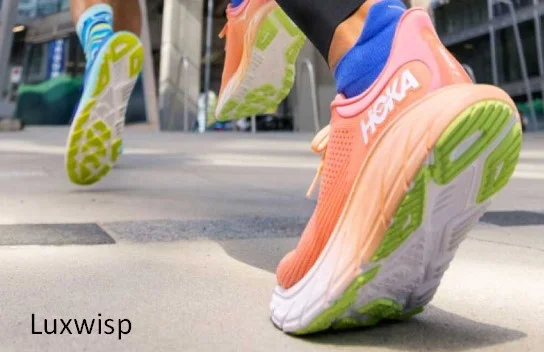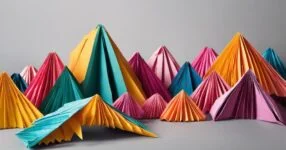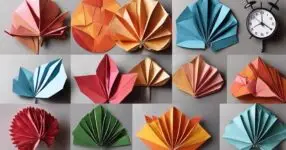The pros of Hoka shoes are their excellent cushioning, reducing joint stress, and offering impressive arch support. Additionally, their comfortable fit prevents foot fatigue during prolonged activities, providing daily wear benefits.
The cons of Hoka shoes are their high cost and limited style options, posing barriers for some consumers. Furthermore, durability concerns and a narrow forefoot limit long-term usage and comfort for wider feet.
Takeaways:
- Hoka shoes offer unparalleled cushioning and stability, ideal for various activities.
- They come with a high price tag, reflecting their advanced technology and durability.
- Limited style options focus more on functionality than fashion aesthetics.
- Longevity is influenced by running surface, usage frequency, and individual care practices.
| Pros of Hoka Shoes | Cons of Hoka Shoes |
|---|---|
| Exceptional Cushioning | High Price Point |
| Enhanced Arch Support | Limited Style Selection |
| Variety of Color Options | Durability Concerns |
| Suitable for Daily Wear | Narrow Forefoot Design |
| Adaptability for Insert Users | Heavier Than Some Alternatives |
| Prevention of Foot Fatigue | Warmth Retention |
| Enhanced Running Experience | Learning Curve for New Wearers |
| Good for Rehab and Recovery | Limited Off-Road Capability |
| Aids in Joint Health | Potential for Overpronation Issues |
| Supportive for Various Foot Shapes | Perception of Bulkiness |
Pros of Hoka Shoes
- Exceptional Cushioning: The hallmark feature of Hoka shoes is their exceptional cushioning, which absorbs impact, protecting the joints from the stress of running or walking. This design is especially beneficial for athletes or individuals who engage in high-impact activities, reducing the risk of injuries and allowing for a smoother stride.
- Enhanced Arch Support: Hoka shoes provide substantial arch support, catering to those who suffer from arch-related issues or require additional support in their footwear. This feature helps in maintaining proper foot alignment, preventing common foot problems like plantar fasciitis and helping wearers to remain comfortable over long distances.
- Variety of Color Options: Offering a wide range of color choices, Hoka shoes cater to diverse aesthetic preferences, allowing individuals to select options that best fit their personal style. This variety makes them appealing not only for sporting activities but also for casual wear.
- Suitable for Daily Wear: The comfortable fit and supportive features of Hoka shoes make them suitable for everyday use, beyond just running or exercise. Their design ensures comfort throughout the day, making them a favorite among those who spend long hours on their feet.
- Adaptability for Insert Users: Individuals who require orthotic inserts find Hoka shoes to be particularly accommodating due to their spacious interior and supportive design. This adaptability ensures that users can comfortably fit their custom orthotics without compromising on support or comfort.
- Prevention of Foot Fatigue: The combination of cushioning, arch support, and a comfortable fit helps in preventing foot fatigue during prolonged periods of standing, walking, or running. This feature is particularly beneficial for individuals with demanding jobs that require extensive periods on their feet.
- Enhanced Running Experience: The unique cushioning technology of Hoka shoes contributes to an enhanced running experience, allowing for longer distances with less discomfort. Runners often report improved performance and decreased recovery times when switching to Hoka footwear.
- Good for Rehab and Recovery: The supportive features and superior cushioning of Hoka shoes make them ideal for individuals recovering from injuries or looking to prevent future ones. They offer a stable platform that helps in the rehabilitation process.
- Aids in Joint Health: By reducing the impact on joints during physical activities, Hoka shoes contribute to long-term joint health. This preventative measure is crucial for runners and athletes who are at a higher risk of developing joint-related issues.
- Supportive for Various Foot Shapes: Despite some concerns about the narrow forefoot, many find that Hoka shoes accommodate a variety of foot shapes and sizes, offering a secure and comfortable fit for a wide demographic of users.
Cons of Hoka Shoes
- High Price Point: Hoka shoes are often on the more expensive side of the market, which can be a significant drawback for individuals on a tight budget. The investment may be worthwhile for some, but the cost is prohibitive for others who may seek more affordable alternatives.
- Limited Style Selection: Despite the variety in color, some users find the style selection of Hoka shoes to be limited, especially when looking for footwear that aligns with specific fashion preferences or needs outside of running and athletic wear.
- Durability Concerns: There have been reports of durability issues with Hoka shoes, where some pairs do not withstand long-term use as well as expected. This can lead to a need for more frequent replacements, offsetting the initial investment in their higher price.
- Narrow Forefoot Design: Individuals with wider feet may find the narrow forefoot design of some Hoka models to be uncomfortable, leading to a cramped fit or the necessity to size up, which can compromise the shoe’s overall support and performance.
- Heavier Than Some Alternatives: Due to their substantial cushioning and support features, Hoka shoes can be heavier than other running shoes, potentially affecting agility and speed during runs or athletic activities for some users.
- Warmth Retention: The thick cushioning and materials used in Hoka shoes may retain heat, making them less breathable and potentially uncomfortable in hot weather conditions or during intense physical activities.
- Learning Curve for New Wearers: The unique design and feel of Hoka shoes may require an adjustment period for new wearers, who may initially find the heightened cushioning and support to be different from more traditional running shoes.
- Limited Off-Road Capability: While excellent for road running and urban environments, some Hoka shoe models may not offer the same level of performance or durability on rough, off-road terrains, limiting their versatility for trail runners.
- Potential for Overpronation Issues: While the arch support is generally a positive feature, some models may not adequately address overpronation, potentially causing discomfort or alignment issues for individuals with this condition.
- Perception of Bulkiness: The significant cushioning and support structures of Hoka shoes can lead to a perception of bulkiness, which may be aesthetically unappealing to some and can influence their choice of footwear for activities or daily wear.
Unmatched Cushioning
Hoka shoes are renowned for their unparalleled cushioning, featuring thick midsoles and ample padding that provide superior shock absorption and comfort for extended periods of activity. This innovative approach to footwear design ensures that every step is adequately supported, reducing the overall impact on the wearer’s joints and muscles. Especially beneficial for runners and walkers who cover long distances, this exceptional cushioning system is engineered to offer a plush, comfortable feel underfoot, thereby minimizing fatigue and enhancing performance.
The maximalist design philosophy of Hoka shoes places a premium on cushioning, aiming to deliver a soft, cloud-like experience with each stride. This focus on maximizing comfort without compromising support has made Hoka shoes a favored choice among those seeking to alleviate foot discomfort and those demanding high-performance footwear for their active lifestyles. The unmatched cushioning caters not only to athletes but also to individuals with demanding daily routines, providing them with the premium comfort and support needed to navigate through their day with ease. In essence, Hoka’s commitment to cushioning excellence underscores its dedication to meeting the diverse needs of its wearers, ensuring they enjoy the benefits of advanced footwear technology.
Enhanced Stability Features
Building upon their foundation of unmatched cushioning, Hoka shoes also incorporate advanced stability features designed to support and protect the feet during dynamic movements. These stability enhancements are critical for runners and athletes who demand not only comfort but also a secure footing as they engage in various activities. Hoka’s dedication to stability is evident in several key design aspects.
To draw the audience in and keep them interested, consider the following stability features of Hoka shoes:
- Wider Midsole Platforms: Hoka shoes are designed with wider midsole platforms. This design choice significantly aids in providing base-level stability, especially beneficial for those who experience overpronation. By widening the base, Hoka ensures a more balanced and stable ride during runs.
- Natural Stride Mechanics: Despite their focus on stability, Hoka shoes are crafted to support without altering the natural mechanics of a runner’s stride. This is crucial for runners seeking not just support but also a shoe that complements their natural movement patterns.
- Extended Heel Elements: Many Hoka models feature extended heel elements. These are specifically engineered to facilitate smoother foot movements and mitigate the impact associated with heel striking. This not only adds to the stability during runs but also enhances overall comfort.
Wide Range of Models
Understanding the diverse needs of runners and athletes, the brand offers an extensive array of models designed to cater to a wide spectrum of preferences and requirements. Hoka’s commitment to providing a variety of footwear options is evident in their product lineup, which features shoes tailored for different activities such as road running, trail running, walking, and everyday wear. This ensures that regardless of the consumer’s lifestyle or athletic endeavor, there is likely a Hoka shoe that aligns with their needs.
Each model in Hoka’s lineup, including popular choices like the Clifton for cushioning, the Bondi for maximum cushioning, and the Speedgoat for trail running, is engineered with specific features to enhance performance. Whether an athlete is seeking additional stability, responsiveness, or cushioning, Hoka has developed a shoe to meet these specific requirements. Moreover, the availability of various colors and styles broadens the appeal, attracting a diverse consumer base.
This wide range of models underscores Hoka’s dedication to inclusivity and customization, ensuring that every individual can find a shoe that not only meets their functional needs but also aligns with their personal style preferences.
High Price Tag
While renowned for their innovative design and superior comfort, Hoka shoes are also recognized for their premium pricing, typically ranging between $130 and $200. This high price tag is reflective of the advanced cushioning technology and unique design features that set Hoka shoes apart from other brands in the market. Despite the cost, the investment in Hoka footwear is often justified by the increased durability and performance benefits they offer, making them a worthwhile choice for serious runners and athletes.
However, the premium pricing can be a significant barrier for some potential users, especially those who are new to the brand or hesitant about the initial investment. Here are three key points to consider regarding the high price tag of Hoka shoes:
- Advanced Technology: The cost is indicative of the sophisticated cushioning and design innovations that enhance comfort and performance.
- Durability and Performance: Higher-priced models tend to offer better durability, potentially reducing the cost per wear over time.
- Investment in Comfort: Many users find the unparalleled comfort and support of Hoka shoes to be worth the higher price, especially those with specific foot conditions or performance needs.
Despite these factors, the high cost remains a notable consideration for consumers evaluating the overall value of Hoka shoes.
Limited Style Selection
One of the notable drawbacks of Hoka shoes is their limited style selection, catering more to functionality than fashion. The brand has established itself as a leader in performance footwear, emphasizing comfort and support over aesthetic appeal. This focus has led to a range of shoes that, while highly effective for running and other athletic activities, offer fewer options for those seeking to make a fashion statement. The limited color choices and design variations may not meet the demands of fashion-conscious consumers who look for footwear that complements their personal style as much as it supports their athletic endeavors.
Furthermore, Hoka’s commitment to incorporating performance features like enhanced cushioning and superior support into their designs may inherently restrict the diversity of styles they can offer. As a result, the aesthetic options available tend to be more subdued or traditional, lacking the flashy or trend-driven elements found in other brands. While this approach has solidified Hoka’s reputation for comfort and performance, it may alienate potential customers who prioritize style equally with functionality. Consequently, those in search of bold designs or a vast array of color options might find the selection offered by Hoka to be somewhat wanting.
Durability Concerns
Turning our attention to the aspect of durability in Hoka shoes, it is essential to critically examine factors such as the rate of wear and tear, the quality of materials used, and the overall longevity in relation to cost.
Despite their reputation for enduring many miles of use with minimal degradation, concerns have been raised about how these shoes stand up over time compared to other brands.
This discussion aims to provide a balanced view on whether Hoka shoes represent a cost-effective investment for runners seeking long-term reliability.
Wear and Tear Rate
Hoka shoes are often lauded for their durability, with numerous users reporting sustained performance and minimal wear over extended periods. The longevity of these shoes, however, can vary significantly based on several factors. To understand the wear and tear rate of Hoka shoes, consider the following points:
- Running Surface and Frequency: The type of surface you run on and how often you run can greatly affect how quickly your shoes wear out. Rough terrains and frequent use can accelerate wear.
- Individual Gait: Your running style plays a crucial role in determining which parts of the shoe wear down first.
- Proper Care: Regular cleaning and maintenance can extend the life of your shoes, mitigating the effects of wear and tear.
Understanding these aspects can help users maximize the durability of their Hoka shoes.
Material Quality Assessment
In assessing the durability concerns of Hoka shoes, it’s crucial to examine the quality of materials used in their construction. The robust Cordura fabric and Vibram outsoles are key components known for their long-lasting performance. Cordura enhances the shoes’ abrasion resistance, making them highly suitable for a variety of terrains. This material choice underlines the brand’s commitment to creating footwear that withstands rigorous use without compromising on quality.
Moreover, the inclusion of Vibram outsoles ensures excellent traction and further augments the shoes’ durability, providing a reliable grip across diverse activities. Specifically, the Hoka Transport shoes, with their emphasis on durability through Cordura branding, present themselves as a solid choice for everyday wear and commuting, promising resistance to wear and tear.
Longevity Versus Cost
When evaluating the financial implications of purchasing Hoka shoes, it is essential to weigh their long-term durability against the initial cost outlay. Despite a higher price point, Hoka shoes are celebrated for their enduring performance and robust construction, which can lead to significant savings over time.
- Long-lasting Performance: Many users experience sustained quality and comfort, even with heavy use.
- Quality Materials: The use of high-grade materials and construction techniques underpins the shoes’ durability and resistance to wear.
- Cost-Effectiveness: The extended lifespan of Hoka shoes often offsets the initial investment, making them an economical choice for avid runners and casual wearers alike.
Specific Fit Considerations
Understanding the specific fit considerations of Hoka shoes is essential for selecting the ideal pair for individual foot shapes and sizes. Hoka shoes stand out in the market for their wide sizing options, ensuring a more inclusive fit for a range of foot types. This is particularly beneficial for those who often find themselves between sizes or with broader feet, making Hoka a go-to option for many.
The unique midsole design of Hoka shoes, characterized by its secure and comfortable fit, is specially engineered for long-distance activities. This means that wearers can expect sustained comfort and support during prolonged periods of use, which is a critical factor for athletes and enthusiasts alike. Additionally, the generous toe box design promotes natural toe splay, further enhancing comfort and reducing the risk of blisters and pressure points.
An innovative feature of Hoka shoes is the active foot frame, which cradles and supports the foot, significantly reducing fatigue. This, coupled with the cushioned and supportive design, makes Hoka shoes a preferred choice for individuals requiring inserts or those who prioritize a plush stride. These specific fit considerations underline Hoka’s commitment to providing a comfortable, supportive, and accommodating fit for a wide range of wearers.
Conclusion
In conclusion, Hoka shoes offer a distinctive combination of unmatched cushioning and enhanced stability, catering to a wide audience through a diverse range of models. While these features position them favorably for daily training and long-distance activities, the high price tag, limited style selection, and durability concerns may deter potential buyers.
Additionally, specific fit considerations must be taken into account to ensure optimal performance and comfort. Ultimately, the decision to invest in Hoka shoes should be informed by individual needs and preferences, alongside an evaluation of the intended use and potential limitations.










